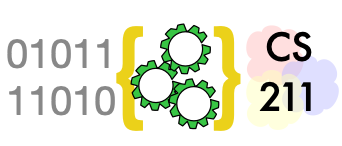Glossary of Terms#
There is a lot of terminology associated with object-oriented programming. Often the same concept has different names (e.g., an instance variable or method may also be called an attribute). There is no need to memorize all the terms in this glossary, but it may be helpful to you when you encounter a term that you haven’t seen before or have forgotten.
Please open an issue to request explanations of terms that you don’t find here.
A#
- abstract class
A class that cannot (or should not) be instantiated directly. An abstract class defines a common interface contract for one or more concrete subclasses.
- abstract base class
Same as abstract class.
- attribute
Component of a class or object. A method may be called a function attribute. An instance variable may be called a data attribute. The
.(“dot”) operation accesses attributes, whether they are methods or variables.
C#
- class
A template for creating and operating on objects. In Python 3, there is a one-to-one association between classes and types. For example, the constant
7is anintobject, which means it has typeintand also thatintis the class that specifies howintobjects are created and operated on. Similarly, if you create a classPoint, objects created by callingPointwill have typePoint.
I#
- inherit
If a class
Chas a methodm, and a subclassDofCdoes not have a methodm, the definition ofminCis inherited by classD, as if it had been copied fromCintoD.- instance
An individual object. We may create several distinct instances from a class. Each instance has its own set of instance variables. For example, if
pandrare instances of classPoint, thexattribute (instance variable) ofpmight be 7, while thexattribute ofrmight be 19.- instance variable
A variable that is stored as part of an object. It may also be called a data attribute. Each object of some class is called an instance of that class, and each instance contains its own instance variables.
L#
- Liskov substitution principle
In a nutshell, the Liskov substitution principle or LSP (named for Nancy Liskov, a programming languages researcher) states that subclasses should behave like subtypes. If
sis a subtype oft, then we expectsto obey the specification oft, i.e., we should be able to use ansobject anywhere atobject is specified. For example, if we are looping through a list oftobjects, mixing a fewsobjects into the list should not cause a problem. Python does not enforce LSP. It is up to the programmer to design subclasses so that they are fully compatible with their superclasses.
O#
- override
If a class
Chas a methodm, and a subclassDofCalso has a methodm, the definition ofminDoverrides the definition inC. Ifcis an instance ofCanddis an instance ofD,c.m()will execute the methodmdefined inC, butd.m()will execute the methodmdefined inD.
S#
- subclass
A subclass of some class
Cis a class defined starting withCand the specifying differences, such as added methods and instance variables or overridden methods. In Python 3, a subclass is also a subtype.- subtype
A subtype is a type associated with a subclass. If a program complies with the Liskov substitution principle, an instance of a subclass should be usable wherever an instance of its superclass is expected.
- superclass
If ‘D’ is a subclass of ‘C’, then ‘C’ is the superclass of ‘D’. (Although Python permits a class to have more than one superclass through multiple inheritance, in our course we will restrict our attention to single inheritance, in which each class has exactly one superclass.)

